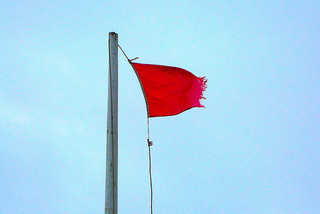 Is your LinkedIn® profile sending out Huge Red Flags?
Is your LinkedIn® profile sending out Huge Red Flags?
Hiring managers for any level – from C-Suite on down – use social media platforms to scope out their applicants and pipeline for future openings. LinkedIn is the site most used by hiring managers, recruiters, and human resources to source for the new candidates.
What are they looking for?
They’re looking at the big picture. If you’re applying for a new position, your resume should be crafted to fit that position, which implies that you will not include experience that is not pertinent (and that’s fine). But there are other things your resume won’t convey. Culture fit. Interests. Red flags. So what are these curious people doing?
- Checking dates of employment
- Tracking employment gaps
- Reading the recommendations written by previous co-workers, clients, supervisors, etc.
- Reading recommendations you’ve written for others
- Looking at the groups you belong to
- And the list goes on
So what message is your LinkedIn profile broadcasting?
OK. I’m hired. No need to worry.
It’s fascinating when someone leaves one position to take another, and doesn’t bother to update their LinkedIn profile. It’s especially fascinating when that person is a high-level manager or executive.
- What does that say to the company you’ve just joined?
- Don’t you really want to be there?
- Is your customer-facing profile no longer important now that you’ve landed the new job?
- Think about it.
But I don’t want to look unemployed.
That only works for a short period of time. Word does get around, and soon, it will become obvious that you’re not employed. What do you do then? It’s important to be able to put something in that gap.
- Try adding a new position to your work history that advertises the type of position you’re looking for.
- Include a position for other work you may be doing in the meantime: volunteer work, or study. Do you contribute to an open source community?
- Use your headline to highlight a desirable position description or past achievement.
I’m a contractor, freelancer, or independent.
All the more reason to keep that profile moving and changing.
- Adding an anticipated completion date can signify when you will be available to take another job.
- Use the summary area to describe what kind of work you’ll be looking for next.
- Tell people what you’ve learned or what really gave you excitement during the last few projects you’ve accepted.
Why should I care about the status update?
Regardless of your employment situation, learning about and keeping abreast of innovation and trends in your career field is part of your career lifeline.
- Share what you learn with your followers.
- Comment on issues.
- Laugh.
- At the very least, post a link or a comment to your update every other week. Weekly is better and easier to remember.
- Your manager is on LinkedIn as well. This is a great way to show that you care about your career.
LinkedIn® is positioned as the leading social network for professionals. Don’t display red flags when opportunity comes knocking. Clean up your act and roll out the red carpet instead.
~Catherine Buck Morgan
Corporate Media Specialist, DPP
Photo: Some rights reserved by Tim Green aka atoach
